Bang Phra, Chon Buri, Thailand

The eastern shore of Bang Phra Reservoir in Chon Buri is a wildlife refuge (“non-hunting area”) that contains an interesting mosaic of habitats—wetlands, grassy fields, scrub, and open, brushy woodland—which results in a high diversity of birds, especially during migration. It also supports resident populations of a few species that are uncommon in central Thailand. Most notable among them is a resident flock of Lesser Adjutants, joined by the two common storks of the region, Painted and Asian Openbill.
Orientation
Directions
The Bang Phra No-Hunting Wildlife Area is about an hour’s drive (80 km) southeast of Bangkok, 5 km south of Chon Buri along Route 7—the tollway that connects Bangkok to the seaside resorts of Phattaya City.
To reach Bang Phra, exit Route 7 at Chon Buri onto the frontage road Route 3701, continue south for 7 km. Take the U-turn lane under Route 7, go back 1 km, and turn west onto Route 3144, which forms the northeastern boundary of Bang Phra and leads south to several points of access to the refuge.
Birdfinding
The Bang Phra No-Hunting Wildlife Area surrounds and includes the dammed reservoir Ban Bang Phra, but most of its land area is a buffer zone that hugs its eastern shore for approximately 8 km. While the entire refuge may be worth exploring, two areas stand out for bird observation: (1) the central flatland south of the stork nesting area, and (2) the sheltered inlet and its surroundings, in the southeastern quadrant of the refuge.
Visitors coming from Bangkok or Chon Buri usually arrive at the north end, where the refuge is heavily wooded and there are two controlled entrances: first, the main headquarters entrance (a fee area open during business hours); and second, the waterbird breeding area, a restricted zone within the refuge that protects the colony of Lesser Adjutants and Painted Storks. Most visitors should ignore these gated entrances and proceed to one of the several informal access points farther south along the road (past the junction where it becomes Route 4099).
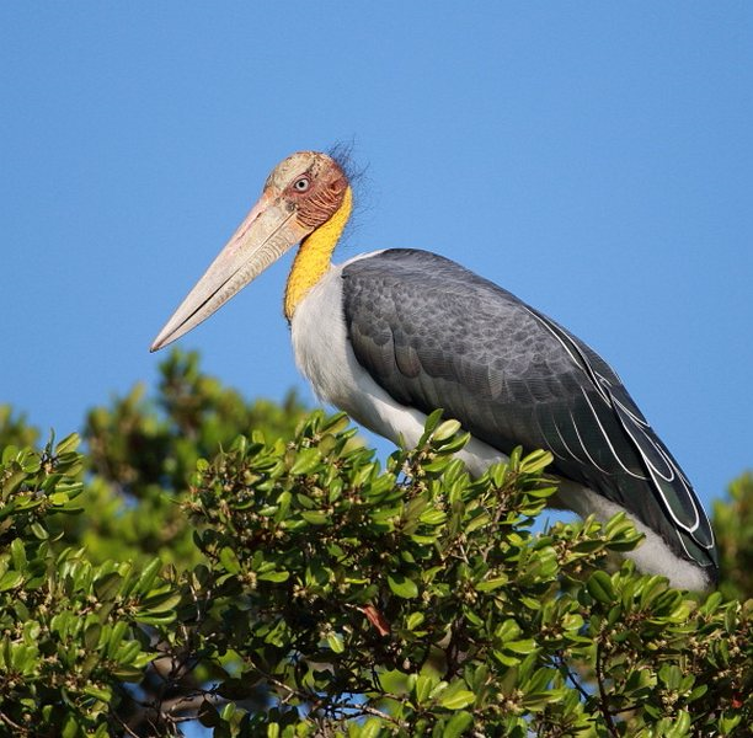
The imposing Lesser Adjutant has mostly vanished from central Thailand, but one small nesting colony has been re-established at Bang Phra. © W.M.C. Narampanawa

Central Flats. The first informal access point is near the center of the refuge, about 2 km south of the waterbird breeding area. It is usually possible to park along the road here and walk in on a short path the connects to the main path, which offers a choice of left or right.
In either direction, the main path leads first through woodland, which opens into an expanse of scrub and grassland, and there are side-trails that lead to the lakeshore—the distance to the shore and the extent of the intervening areas that can be explored vary widely depending on the water level in the reservoir.
Turning right (i.e., north) is generally the better option, as it leads toward the stork colony, the habitat is more extensive and varied, and the levels of human and canine disturbance are lower. Access to the colony is prohibited, but it can be viewed well from unrestricted areas where the main path approaches it. (The resident flock of Lesser Adjutants that presides over the area is the result of a release program, so its “official” status as wild, feral, or merely a group of released individuals is an open question, but in any case it is a wild-living flock.)
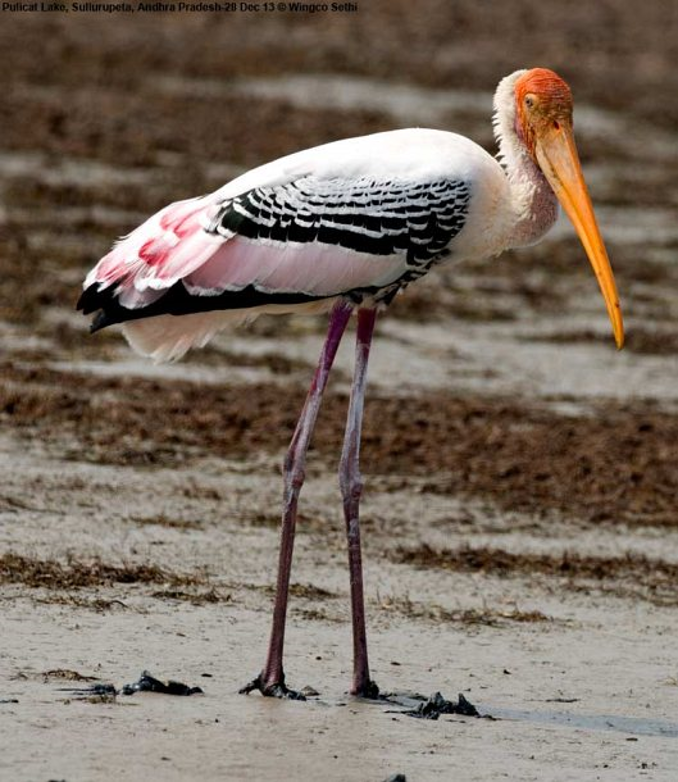
The spectacular and graceful-yet-awkward Painted Stork nests alongside the Lesser Adjutants at Bang Phra. © Vijay Kumar Sethi
In the wooded areas, some of the more interesting residents and regular visitors include: Red Junglefowl (white-cheeked form), Shikra, Thick-billed Green-Pigeon, Green-billed Malkoha, Asian Barred-Owlet, Eurasian Hoopoe, Lineated Barbet, Freckle-breasted and Laced Woodpeckers, Blue-winged Pitta, Ashy Minivet, Black-winged Cuckooshrike, Greater Racket-tailed Drongo, Black-naped Monarch, Racket-tailed and Rufous Treepies, Dark-necked Tailorbird, Black-headed, Black-crested, and Sooty-headed Bulbuls, and White-crested Laughingthrush.
In scrubby and grassy areas, common species include: Greater and Lesser Coucals, Plaintive Cuckoo, Green and Blue-tailed Bee-eaters, Indochinese Roller, Brown and Long-tailed Shrikes, Indochinese Bush Lark, Zitting and Golden-headed Cisticolas, Black-browed and Oriental Reed-Warblers, Chestnut-capped and Yellow-eyed Babblers, Siberian Stonechat, Baya and Asian Golden Weavers, and Plain-backed Sparrow.
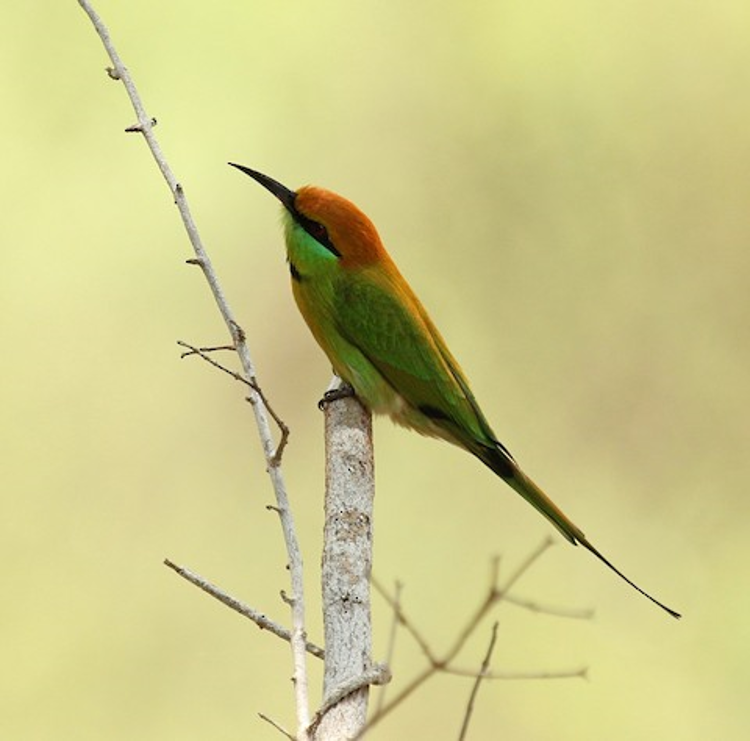
The lovely Green Bee-eater is among the commonest birds in open habitats at Bang Phra. © Andrey Vlasenko
Additional species that occur in the refuge’s open habitats, but are not to be expected on most visits, include: Chinese Francolin, Rain and Blue-breasted Quails, Yellow-legged and Barred Buttonquails, Blue-throated Bee-eater, Rufescent and Gray-breasted Prinias, and Vinous-breasted Starling.
Along the lakeshore most of the common waterbirds of central Thailand can be found, often in impressive numbers. Many uncommon waterbirds also occur at least occasionally beside, in, or over the lake, including: Oriental Darter, Spot-billed Pelican, Black-headed Ibis, Osprey, White-bellied Sea-Eagle, Oriental Pratincole, and Greater Painted-Snipe.
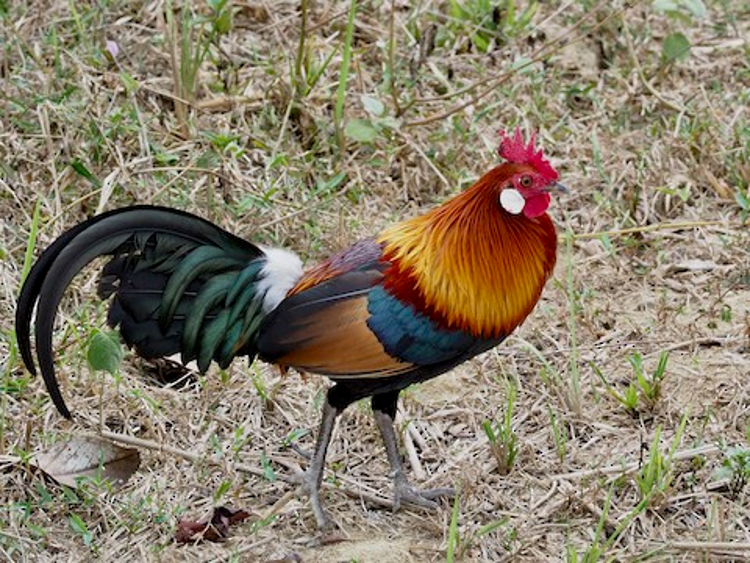
The white-cheeked form of Red Junglefowl is often heard and sometimes seen in the woods at Bang Phra. © Marc Choisy

Rufous Treepie is an uncommon resident at Bang Phra. © Arijit Bannerjee
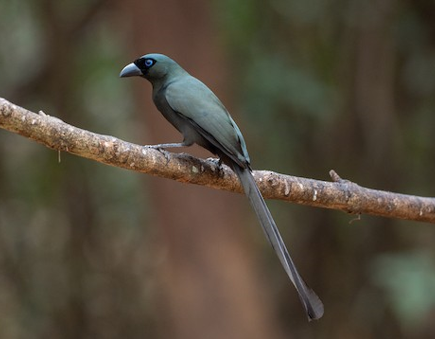
The peculiar Racket-tailed Treepie is among the more common and conspicuous landbirds at Bang Phra. © Mollee Brown
Sheltered Inlet. The other highly productive portion of the refuge is centered on what was once a separate pond, but is now an inlet connected to the main reservoir unless the water level is too low. It is possible to walk to this area from the central flats described above by continuing south along the main path, but there are also direct access points where one can park along the road.
The inlet is secluded, mostly surrounded by wooded hillsides, and has a couple of islands in it. Both the water body and the woods around it are often busy with birdlife. A path circumvents most the inlet, allowing for a full exploration of both sides, with views of the islands.
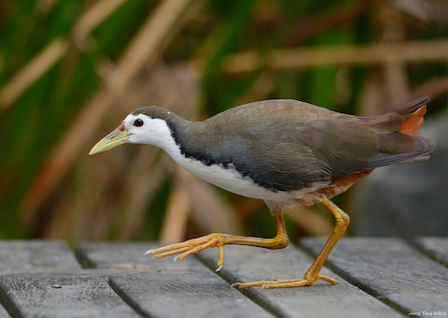
White-breasted Waterhen is the rail most often seen at Bang Phra. © Jerry Ting
The marshy margins of the inlet are favored by bitterns (Yellow, Cinnamon, and sometimes Black), White-breasted Waterhen, and Chestnut-capped and Yellow-eyed Babblers, among others. White-throated Kingfisher is consistently present, and certain shy species such as Greater Coucal and Green-billed Malkoha can often be seen on the islands, where they evidently feel safe enough to remain in view longer than they usually do otherwise.
The woods generally harbor the same species listed for the flats, but often in stronger numbers or for some reason more readily observable. The list of birds that have been found at the refuge over its lifetime is very long, in part because it tends to a wide array of vagrants and occasional migrants—many of which are woodland birds that turn up in spring in the woods around the inlet.
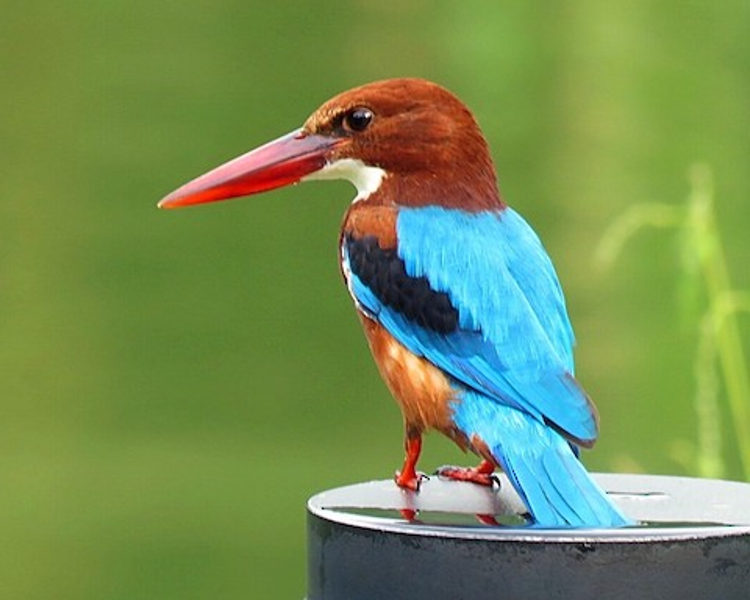
The electric-turquoise White-throated Kingfisher is often seen at Bang Phra’s sheltered inlet. © Angela Christine Chua
Notes
When to Visit
Bang Phra seems to be good for birds at all times of year, with peak migration periods likely being the best for overall diversity.
Many members of the local community fish along the lakeshore, especially its southeastern portions. This activity appears to occur daily, although use may be heavier on weekends—so weekdays are likely to be somewhat quieter and better for birds.
The informal access points are not controlled, so the refuge’s visitation hours are effectively unlimited. There are some internal gates that may be closed from time to time, blocking access to some portions of the refuge, but this does not appear to happen on a consistent schedule.
Hazards & Hassles
In the southern portions of Bang Phra, there are often many dogs wandering around, sometimes in groups. Most of these dogs belong to (or at least associate with) the fishermen and families who work along the lakeshore, and are unlikely to be dangerous to others. However, they can be extremely annoying, and sometimes bark at and follow visitors. As in many other rural areas of central Thailand, it is advisable to carry a stick, or better yet a telescoping baton, to discourage dogs from bothering you. Ideally, the visitor should be prepared to actually use the stick or baton. In most cases the dogs will lose interest, or the associated humans will restrain them, after an initial encounter.
Links